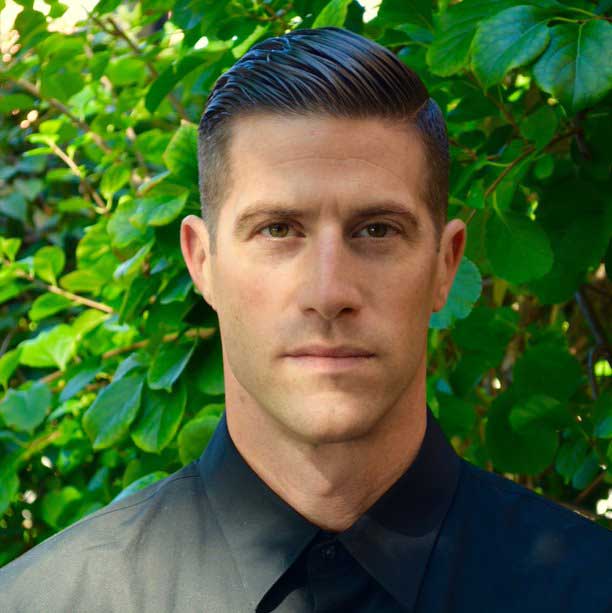Based in New York, former head curator of Artsy, Matthew Israel has written three books: Kill for Peace: American Artists Against the Vietnam War, The Big Picture: Contemporary Art in 10 Works by 10 Artists, and A Year in the Art World: An Insider’s View, published by Thames & Hudson.

In A Year in the Art World, Israel analyses a pre-COVID art market, considering everything from the challenges of art fabrication, to the infamous banana duct-taped to a wall by artist Maurizio Cattelan.
In Los Angeles, Israel visits fabricators who help artists such as Taryn Simon realise their large-scale visions. He writes: “Standard Sculpture is very much a producer-fabricator, and is one of the most respected fabricating firms on the West Coast. Since opening in 2010, they have worked with many famous contemporary artists, including Jeff Koons, Yayoi Kusama and Sterling Ruby. They have also worked with world-renowned museums and galleries including the Broad, The Whitney Museum of American Art, Centre Georges Pompidou, Gagosian, Maccarone and David Zwirner.
(Image top of page: XRF pigment analysis at the Conservation Center of the Institute of Fine Arts, New York University, 2016. N.L. Roberts, courtesy The Institute of Fine Arts, New York)
See also: Grayson Perry Speaks Out About Staying In For The Arts Society Magazine
Fabrication
“Like a lot of sculpture fabrication enterprises, Standard has grown progressively and iteratively from basic beginnings. Standard’s Chris Grant explains, ‘When I started out, I had no technology – no tools really. I had hand tools and wrenches, and screwdrivers, scales, and I could make moulds [and] I had a lot of studio stuff, but I didn’t have [any major] equipment [that could] weld really thick metal, for example. So, we were a kind of low technology company,’ he says, jokingly. But this aspect became an advantage for them, meaning they had to be ‘pliable, depending on what type of project we were dealing with.’

“‘In one case,’ Grant says, ‘we were assisting Jeff Koons with a polyethylene project – so we became experts in tooling and forming polyethylene.’ As a result of jobs like this, he explains, ‘we’re constantly trying to find ways to do stuff. Today I have projects in aluminium and stainless steel, and next week it could be anything.’”
Speaking to former President of the Art Dealers Association of America (ADAA), Adam Sheffer, Israel asks how galleries can compete in an increasingly crowded market – there are over 17,000 contemporary art galleries worldwide. In addition to having a their own distinct point of view, “Marketing is also key, according to Sheffer. It’s not just about putting on a show and seeing what happens. ‘Hope is not a strategy, put it that way.’
“Sheffer works closely with his marketing team, his photography department, the person writing the press release or the catalogue to tell a story about the work. ‘Why are we showing it? What does it mean? How does it affect the world? How is this different than things that we’ve seen before? There’s got to be a message associated with it. Otherwise you haven’t quite packaged it properly,’ he says.”
In New York City, Israel visits the School of Visual Arts (SVA) and asks curator and art critic Steven Henry Madoff, author of Art School: Propositions for the 20th Century, about the future of art education.
Crisis
“‘If anything, the crisis is cost for students and their subsequent level of debt, which is an issue for all American schools. And there’s the hanging question concerning Chinese students in particular – as once again the situation for all American schools, and European art schools as well, is that it may not always be the case that great numbers of Chinese students will come, as they have been for several years. If for political or economic reasons that changes, this will have a powerful impact on the revenue and staffing of our art schools.”
See also: Negotiating the Terrain of the Future: Behind the Scenes at Artes Mundi with Nigel Prince

And in Paris, speaking to art advisor Marta Gnyp, Israel asks about the difference in approach between American and European art collectors. “For major old-style European collectors, the idea of art advisors ‘is almost hideous because why would someone else bring works to your attention? [The assumption is] why can you not do it yourself?’ But with the expansion of the art world, with some ‘hundreds of thousands of new and rediscovered artists, which is fierce’, she says, ‘it’s become very important to not do it yourself…So, the art advisor, especially if you have an ambitious collection, makes sense.’
Extracted from A YEAR IN THE ART WORLD: An Insider’s View by Matthew Israel, published by Thames & Hudson in hardback at £19.95.















